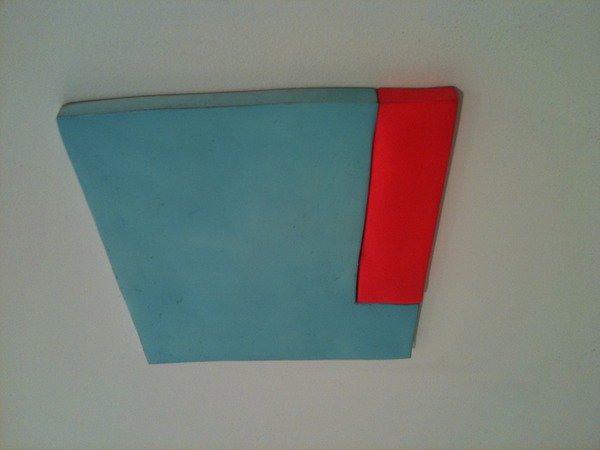Sadie Benning
dal 17/9/2011 al 22/10/2011
Segnalato da
17/9/2011
Sadie Benning
Participant INC, New York
The term 'Transitional Effects' makes reference to predetermined video editing templates used to bridge one image to the next: wipes, fades, cuts. As well, this title reflects the representational aspect of Benning's seemingly abstract paintings.

Recently focused on installations that include drawings,
paintings, video, and sound works, Benning’s practice explores notions of abstraction,
identity, and the legacy of minimalism as an irresolute form, often contested by its
original practitioners.
Well-known as a film/video artist, Benning’s arrival at object-
making occurred through another medium, video—much like Donald Judd and Dan Flavin’s
practice evolved from painting, and Robert Morris’ physicalized sculpture grew from his
background in performance. Benning also notes that she is often “inspired by things that
bother me.”
If minimal art was a response to the implicit power relations that surrounded art
production in the ‘60s, against which practitioners of minimalism, conceptualism, and
institutional critique, for example, sought to delineate their work—Benning, as well, has
sought to depart from a reliance on self-obsolescing tools associated with video
(equipment, technology, manufacturing), exploring the handmade through materials that
maintain a longer, more independent history.
The term Transitional Effects makes reference
to predetermined video editing templates used to bridge one image to the next: wipes,
fades, cuts. As well, this title reflects the representational aspect of Benning’s
seemingly abstract paintings. Contrasting adjoining color panels (wood with modeled joint
compound, sanded and painted with high gloss and matte spray paint) purport to be poured
from a mold, composing an indeterminate medium, at once fabricated and bearing a human
touch. The paintings literally denote a static polarity between two unequal parts,
insinuating a suspended state of anxiety, a pause that is perhaps reflective of our
shared, collective condition—caught between one thing and the next.
Informed by source materials available growing up in the ‘80s, Benning’s drawings and
paintings are as much a part of her daily life as making video, sampling in music, zines
and comics, embodying the pleasures and dangers of supposedly inheriting everything. Her
geometric works in painting and sculpture represent a long-developing parallel to her
visual and auditory storytelling through video, positing her engagement with abstraction
as a performance-based exchange, in both its production and reception. Although language
is receding, Benning’s object-based work is often accompanied by audio, either in the form
of cassettes or homemade records. The single-channel video, Old Waves, Record One, Old
Waves, Record Two, shot on a 1960s black and white tube camera and comprised of
handwritten text and music from a pair of pop records made by the artist, will be on view
as part of Transitional Effects.
Dan Graham, in his “My Works for Magazine Pages: ‘A History of Conceptual Art’,” noted:
“While American Pop Art of the early 1960s referred to the surrounding media world of
cultural information as a framework, Minimalist art works of the mid-to-late 1960s seemed
to refer to the gallery interior cube as the ultimate contextual frame of reference or
support for the work.” However, these frameworks could not long maintain the structural
transparency necessary to distinguish critical artworks within an economy that
consistently sought to assimilate them. Benning’s shifting between formats and mediums
perhaps queries both the structure of social media and the art institutional frame.
However widely screened, the circulation of Benning’s early work reflected a pre-Internet
sphere of communication (letters, zines, cassettes sent in the mail) and her videos were
distributed and shared using such communal methods, belying notions of the mass
consumption of media. Even more so, Benning’s paintings require the presence of the
viewer, in one location, to apprehend moments of suspended transition.
Opening reception: Sunday, September 18, 7-9pm
PARTICIPANT INC
253 East Houston Street, ground floor - New York
Hours: Wednesday-Sunday, noon-7pm



